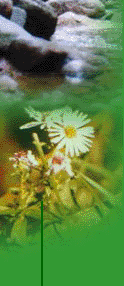Gembloux Agricultural University
has grown up in and around the grounds and listed buildings of a mediaeval Benedictine abbey.
The Abbey of Gembloux was founded
around 940 by Chevalier Wicbertus (later called Saint Guibert).
The history of the monastery has
come down to us thanks in the main to Sigebert, a monk regarded as one of the great historians of the Middle Ages. The town
of Gembloux has put up a statue in his memory, to which students traditionally do honour during folk festivals.
In 1678, both the abbey and the
town were burned down. The abbey was rebuilt between 1762 and 1779 in classical style by architect Laurent-Benoît
Dewez. The crypt below the cloister is the only remaining trace of the 11th century mediaeval buildings.
During the French Revolution, Gembloux
became merged in the Department of Sambre et Meuse and the district of Namur, which were annexed by France. The Directoire
ordered the abolition of religious orders and the confiscation of their property. The abbey was sold in 1797. It subsequently
changed hands several times over the years.
In 1860, the State Agricultural
Institute, Belgium’s first higher education establishment for agriculture, was founded there. The Agricultural Institute
became the State Agricultural Institute in 1920, then the State Agricultural University in 1965.
Gembloux Agricultural University
(FUSAGx) is now an autonomous university institution within the French Community of Belgium.
In the present day, modern facilities
and buildings stand side by side with the heritage of the past, taking the campus out into the town.
As early as the 11th century, the
Abbey of Gembloux was a meeting-place where knowledge was exchanged and stored. Today, Gembloux Agricultural University marries
age-old tradition with a vision of the future, offering a unique setting for the study of life sciences.
Since the 19th century,
Gembloux has gained an international reputation for research, scholarship and business in the field of agronomy.
It has become what is termed an "agrobiopole", the site of a collection of institutions involved in teaching, research
and technological transfert in agronomy and biological engineering.
For more details see the fusagx website on link
page




